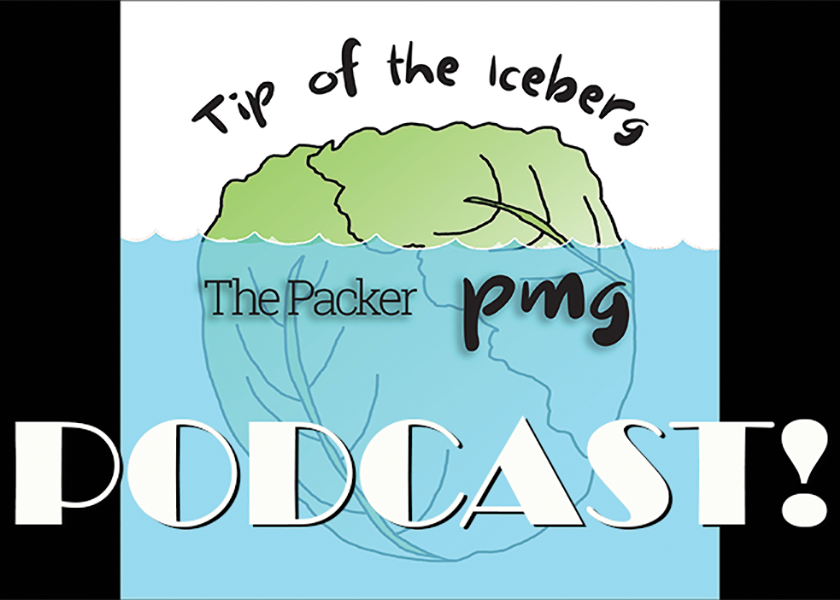Episode 35 of Tip of the Iceberg Podcast features an interview with Nick Houshower of private equity firm Equilibrium, a major investor in the greenhouse produce space, including with Little Leaf Farms, Revol Greens, AppHarvest and Houwelings.
Houshower discusses the factors that are driving private equity interest in greenhouse produce, what makes partnering with private equity attractive for these companies, why greenhouse is so expensive, why Equilibrium has a very favorable long-term outlook for the sector, and much more on the economics of this part of the produce industry.
You can listen to the full interview on the player below or on popular platforms like Apple Podcasts and Spotify, and you can scroll down to check out key takeaways from the discussion.
Here are some of the highlights from this deep dive on the economics of greenhouse growing.
Why greenhouse produce is interesting for private equity
“Once you go into a greenhouse or a vertical farm, you have the ability to produce on a reliable basis and forecast production on a reliable basis,” Houshower said. “That’s important for consumers, that’s important for retailers, and at the end of the day it’s important for us as investors because it allows me to look at this as not cyclical outdoor field agriculture but something that feels a lot more like infrastructure or real estate. I can charge a lease payment instead of just getting a return from operation.
“So we started actually looking at the vertical farming space and said, ‘Could we structure an investment product that would be interesting for institutional investors in the vertical farming space?’ We asked the question, in 2013 and still today, what is driving the investor interest and the market interest in vertical farming? Is it some fundamental disruption in supply chain, is a different product, is it sustainability, or at the end of the day is it economics, is it cheaper? The answer for us on vertical farming is it’s the first three – it’s not yet the last one, economics.”
(But more on that later.)
Why private equity is interesting for greenhouse companies
“A one-acre lettuce greenhouse might cost you $3.5 million per acre, and you need 10 acres minimally to be economically efficient,” Houshower said. “That’s a $35 million to $40 million investment, and then as you’re thinking about how do I scale up to meet the needs of Walmart, Costco, Trader Joe’s, or foodservice companies, you’re looking at how do I build 100 acres of these over three years? And that becomes a $400 million-$500 million capital need in a short amount of time, and so what private equity and what Equilibrium more specifically offers is we’ve structured our whole thesis around partnering with growers.
“The market is so big, the demand for controlled environment produce is so big, that operators need more capital than their own balance sheets and organic growth rates can sustain.”
What success looks like
“Our target for us is, on a delivered basis, we want to be investing in lettuce greenhouses that are cost-competitive with field product that comes from California, Yuma or Mexico, so factoring in not just what it costs to produce at the farm, but what does it cost to produce at the farm, to ship it to the customer and then to factor in higher shrink rates along that supply chain because you’re harvesting it earlier and shipping it longer distances, whereas in a greenhouse, yes, we have higher production costs and higher capital costs, but on a delivered basis today we’re getting close to be economically competitive with field product on a delivered basis, and that’s our metric for success,” Houshower said.
“The challenge always is can you do it at the scale that the largest retailers need, and we’re not there yet, but that’s where Equilibrium and our ability to commit large chunks of institutional capital to the sector gives retailers the conviction that there are now the capital partners for the industry necessary that they could see a path to having their supply chain risk-managed over a period of time.”
Long-term cost structure and opportunities
“Our observation on automation and the path of automation in horticulture and farming … is that you have more near-term opportunity for automation in greenhouses because the environment is standardized. The hardest part of automation is dealing with uncertainty,” Houshower said.
“(When you go in a greenhouse), it’s Groundhog Day. It’s the same weather every day, the tomatoes are in the same place every day, the pipe rail spacing is standardized from the U.S. to the Netherlands to South Korea to Australia, and that allows an entire industry to develop computer automation, other automation protocols and technologies that are able to operate in an environment of standardization that allows for much more rapid progress.”

